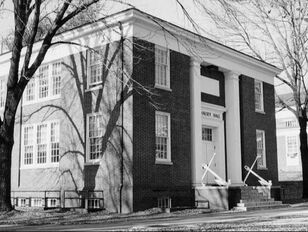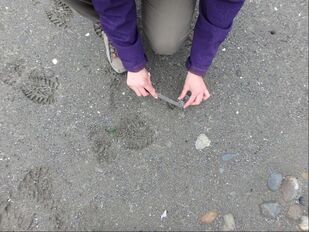Research tools we use
In the lab |
In the fieldDifferential GPS (base, rover)
Vibracoring systems (Al-tripod; concrete vibrator & power unit; VibeCore-Mini) Inflatable boat (boat, motor) Portable sub-bottom profiling system (link) Ship-hauled sub-bottom profiling system (aboard RV/IB NBP, link) Multibeam echosounder (RV/IB NBP, link) Gravity, piston, and megacorer sediment core systems (aboard RV/IB NBP) |
On the computerMATLAB
R Python ArcGIS Pro ArcMap QGIS Google Earth Engine |
Tutorials & guides
Using Topographic Position Index (TPI) to find bedforms (posted November 2020)
Marion McKenzie discusses the use of a Topographic Position Index (TPI) tool to semi-automatically identify streamlined bedforms in deglaciated landscapes. The TPI tool is ~75% accurate in areas of uniformly streaming ice flow and was created using ModelBuilder and ArcPython (Tagil and Jenness, 2008; Weiss, 2001).
Using QGIS to calculate landform density and packing (posted April 2021)
Jake Slawson covers how to calculate landform density (the number of landforms per unit area) and packing (the surface area covered by landforms) using an example of streamlined, subglacial bedforms in the deglaciated landscape of the Puget Lowland, Washington state.
Marion McKenzie discusses the use of a Topographic Position Index (TPI) tool to semi-automatically identify streamlined bedforms in deglaciated landscapes. The TPI tool is ~75% accurate in areas of uniformly streaming ice flow and was created using ModelBuilder and ArcPython (Tagil and Jenness, 2008; Weiss, 2001).
Using QGIS to calculate landform density and packing (posted April 2021)
Jake Slawson covers how to calculate landform density (the number of landforms per unit area) and packing (the surface area covered by landforms) using an example of streamlined, subglacial bedforms in the deglaciated landscape of the Puget Lowland, Washington state.
Transparent guidelines & expectations
Research group guidelines
Mentorship agreement
PhD milestones and requirements
MS milestones and requirements
Incoming grad student and postdoc tasks
Pre- and post-conference survey
Annual reflection on progress to be completed by mentor and mentee
Recommended courses for group members to take at UVA
Field safety plan and medical form
Identification card for offsite research
Mentorship agreement
PhD milestones and requirements
MS milestones and requirements
Incoming grad student and postdoc tasks
Pre- and post-conference survey
Annual reflection on progress to be completed by mentor and mentee
Recommended courses for group members to take at UVA
Field safety plan and medical form
Identification card for offsite research


